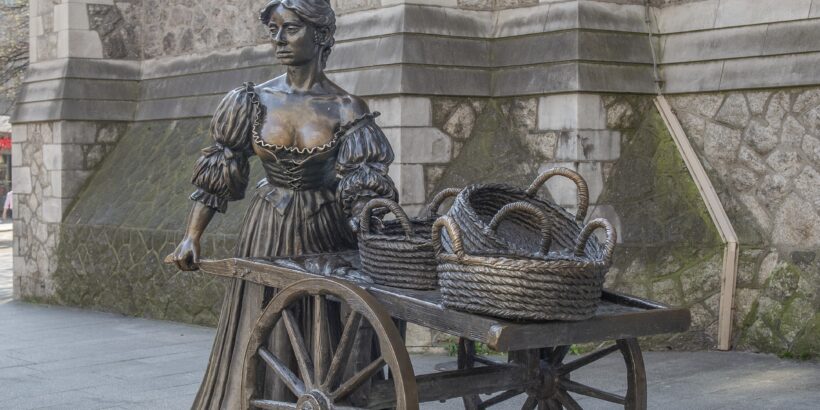Dublin’s ‘sweet Molly Malone’ is a well-known sight on the city’s tourist map, and her ballad ‘Cockles and Mussels’ has been recorded by musicians from The Dubliners to Joni Mitchell. However, the story of the Irish capital city’s unofficial daughter is darker than its catchy tune implies. Shellfish hawker Molly dies “of a fever,” which may well have been typhoid.
Typhoid fever is caused by the bacterium Salmonella enterica serovar Typhi (S. Typhi) and spreads from person to person through food and water contaminated with human faeces. Although it is no longer common in Europe, the disease caused substantial mortality in late-nineteenth-century Great Britain and Ireland. Three successive generations of the British royal family contracted the infamous disease. Prince Albert, husband of Queen Victoria, succumbed to typhoid in 1861; both his son and grandson, the subsequent Kings Edward VII and George V, pulled through in 1871 and 1891 respectively. The third of these royal cases thrust Dublin into the spotlight when the then Prince George of Wales fell ill shortly after a visit to the country.
The Dublin official responsible for public health, Sir Charles Cameron, was well aware of the threat posed by typhoid – and, after local epidemics in 1891 and 1893, commented on the fact that disease incidence was far more common among the urban poor than selective press attention for outbreaks amongst the wealthier implied. Although Dublin had invested considerable resources in new water and sewage systems, typhoid had remained stubbornly prevalent. To his credit, Cameron recognized that some of this prevalence was driven by the city’s broader social problems – namely, that more than a third of its population lived in precarious circumstances. The damp, drafty rooms of Dublin’s notoriously overcrowded tenement houses were perhaps the most visceral symbol of the city’s nineteenth-century economic decline. Many tenement inhabitants could not afford basic life necessities – food, fuel, and adequate clothing – and had to share insufficient sanitary facilities, generally limited to a single water pump and toilet in a communal yard. Such living conditions were a hotbed for direct typhoid transmission.
As our exhibition shows, infrastructure development that took little account of working-class needs exacerbated problems. Historically, many poor Dubliners consumed locally sourced shellfish to supplement their bread-based diet. Unfortunately, the late 19th century saw many of the shellfish beds supplying this inexpensive protein become contaminated with bacteria, including typhoid, due to Dublin’s growing population and the concomitant increasing – unregulated – raw sewage discharge. Although Dublin authorities such as Charles Cameron had warned about the link between shellfish contamination and typhoid outbreaks as early as 1880, the city’s new sewage system (completed 1906) discharging partially treated sewage just off the entrance to Dublin Port failed to resolve the issue. Unsurprisingly, typhoid prevalence was particularly pronounced amongst those dependent on the shellfish trade for their living. Although ‘sweet Molly’ may well have been fictional, many hawkers like her would have been exposed to both infectious shellfish and the polluted environment in which they were produced.
Contracting typhoid through exposure to dangerous environments remains an acute risk for many in countries where safe, effective sanitation systems are still lacking – or where humans are asked to service sewage systems without adequate protection. Molly, and Dublin’s unofficial anthem ‘Cockles and Mussels’, serve as a stark reminder that tackling social inequality and making sure that public health interventions in the form of water sanitation infrastructure and vaccination campaigns serve the most vulnerable is a prerequisite for public health.
Cover Photo: Statue of Molly Malone and her cart at the current location on Suffolk Street, Dublin. Credit:



